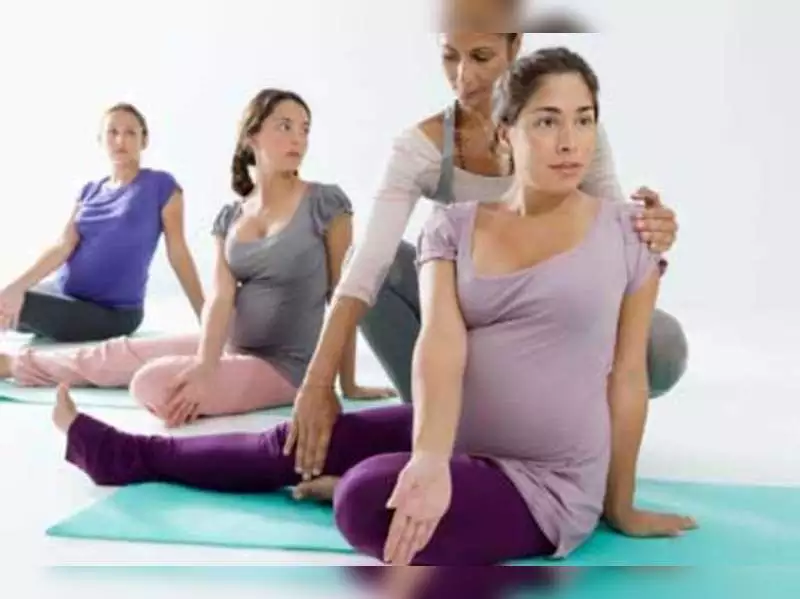
Yoga is thousands of year-old discipline to engender mind-body harmony. Most of its development was between 500 BCE and 800 CE. From the 1970s, yoga spread worldwide and has become part of urban culture. The three main practices of Yoga are asana (posture), pranayama (breath control) and dhyana (meditation). Modern Yoga, or yoga in the modern age, is a combination of asanas and gymnastics.
Yoga was a spiritual practice. But in recent times it has emerged as a way to attain health which is defined by the World health Organisation as “complete physical, mental, and social well-being and not merely the absence of disease or infirmity.”
Health benefits of yoga
Scientific evidence that therapeutic yoga has many health benefits. Numerous studies and anecdotal evidence also confirm health benefits of yoga.
Yoga can benefit health in thirty-eight ways. A few of these are it can relieve back pain, improve heart health, improve strength, coordination, balance, and flexibility, reduce inflammation, help in osteopenia, in oncology, and in recovery from surgery, help, reduce anxiety and stress, ease arthritis symptoms, help sleep better, cause more energy and brighter moods. Yoga may also boost immunity, improve bone health, improve brain functioning, and self-esteem.
Yoga and women’s health
Yoga is especially beneficial in certain medical conditions typical to women. Six of these conditions are menopause, endometriosis, polycystic ovary syndrome (PCOS), uterine fibroids, premenstrual syndrome (PMS), and pregnancy.
Yoga and Menopause
Women stop mensurating at a certain age. This condition is menopause. When a woman has not mensurated for twelve consecutive months, she has reached menopause. Natural menopause occurs at age 40s or 50s. Premature menopause may occur before age 40 if ovaries are damaged, or are surgically removed, or because of medical treatment. After menopause, a woman cannot conceive.
At menopause, ovaries stop producing most of the female hormone estrogen. Low estrogen levels cause thirty-four symptoms. These can be severe (in 20% women), mild (60%) or no symptoms (20%). The symptoms may start during perimenopause, a period of 8-10 years before menopause. After menopause, during the post menopause period, symptoms ease for most women. But for some the symptoms may continue for ten years or longer.
The symptoms during perimenopause are:
- Heavier or lighter than usual periods
- Irregular or skipped periods.
- Aggravated premenstrual syndrome (PMS).
- Breast tenderness.
Main symptoms of menopause are:
- Frequent urination
- Night sweats and/or cold flashes.
- Hot flashes
- Insomnia and sleep disorders
- Dry vagina, discomfort during sex.
- Dry mouth, eyes, and skin
- Mild depression, irritation, mood swings
A few women may also have:
- Joint and muscle aches and pains
- Hair loss or thinning
- Racing heart
- Headaches
- Weight gain.
- Changes in libido (sex drive)
- Difficulty concentrating, memory lapses
- Higher risk of cardiovascular disease (CVD)
Therapy for menopause symptoms
Hormone Replacement Therapy (HRT), giving estrogen, is the most effective therapy for menopause symptoms. But HRT has many side effects. It also increases the risk of blood clots, certain types of cancer (breast cancer), cardiovascular disease, and strokes . HRT is therefore given only if essential, in smallest doses and for shortest time.
Yogic breathing techniques help women reduce hot flashes and night sweats. And yoga may alleviate insomnia and sleep disorders, depression, irritation, and mood swings, reduce joint and muscle aches and pains, reduce symptoms of severe PMS, reduce risk of CVD, and improve concentration and memory.

Today women in India live forty to fifty percent of their life in peri and post menopause phase. Yoga can help them cope with the symptoms of menopause.
Yoga and polycystic ovary syndrome (PCOS)
PCOS affects women of reproductive age. It increases the risk of infertility, endometrial and breast cancer, obesity, high blood pressure, heart problems, and diabetes. The exact cause of PCOS is unknown. But production of excess male hormone androgen and insulin, and certain genes are contributing factors. Treatment for PCOS is weight loss, healthy lifestyle, and some medications.
Yoga reduces testosterone levels, helps weight loss, stimulates reproductive organs, and improves emotional health, and thus limits the complications of PCOS.
Yoga and endometriosis
Endometriosis is caused by abnormal growth of the inner tissue of the uterus. It can cause infertility and chronic pelvic pain (CPP). It has no cure except removal of uterus. Surgical removal of tissues gives only temporary relief. Yoga reduces CPP but does not improve fertility.
Yoga and uterine fibroids and polyps
Uterine fibroids are benign tumors in the female reproductive tract. These are fed by hormones and blood, but the precise cause of their occurrence is unknown.
Yoga does not help shrink fibroids. But doing yoga during menstruation may increase blood flow into uterus and dilate uterine blood vessels. This may cause heavy bleeding and accelerate fibroid growth. Therefore, yoga should not be done during the first three days of period, or if the blood flow is heavy.
Yoga and premenstrual syndrome (PMS)
Premenstrual syndrome (PMS) occurs during late luteal phase of menstrual cycle and is relieved after the onset of menstruation. Main symptoms of PMS are mood swings, tender breasts, food cravings, fatigue, irritability, and depression. Three out of four women experience some symptom of PMS. Yoga, can reduce, or relieve, PMS distress
Yoga and pregnancy

Prenatal yoga reduces stress and anxiety, improves sleep, decrease lowers back pain, nausea, headaches, and shortness of breath, and increases the strength, flexibility and endurance of muscles needed for childbirth. Yoga also causes increase in baby’s birth weight, decrease in preterm labor, and decrease in intrauterine growth restriction (IUGR). Hatha yoga and restorative yoga are also viable choice for pregnant women.
But talk to your doctor and to yoga instructor before starting yoga during pregnancy.
Conclusion
Yoga is cost-free and non-invasive. People of all ages benefit from yoga. It is good for women’s health and wellbeing and is beneficial in certain medical conditions typical to women. For best results, integrate yoga with healthy lifestyle, healthy diet, exercise, therapeutic massage, and other stress-reducing measures.